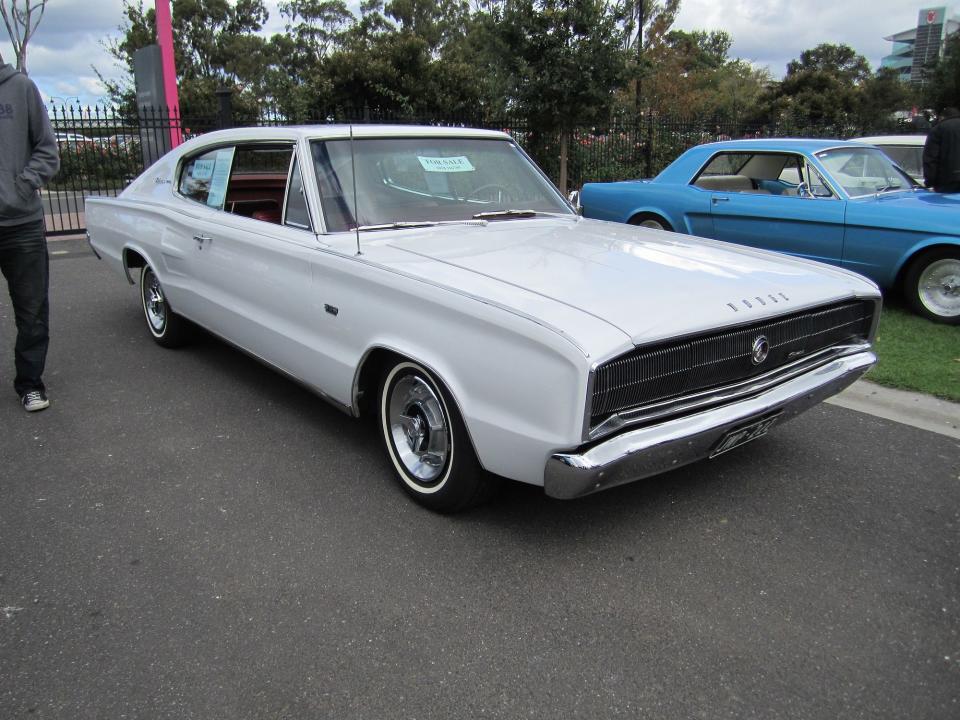Motorious Explores The Dodge Charger
⚡️ Read the full article on Motorious
Dodge Charger - America’s automotive evolution.
The Dodge Charger started life as a show car in 1964. While the Dodge Charger fits into many categories, the very first time the moniker was used, the car is showed up on was unlike anything made up to that point. The Dodge Hemi Charger concept was a purebred muscle car with a 600 horsepower engine and three-speed manual transmission. Inspiration for the original design of the single show car was based on the Polara and fitted with a 426 Wedge engine. The name then showed up in 1965 on certain Dodge Darts as a “Charger 273” as a hardtop or convertible, all yellow with black tops, and options like Crager wheels and the 273 engine.
When production officially began on the Dodge Charger as its own model in for 1966, it was presented as an upscale, upsized pony car. Considerably larger than the Ford Mustang, the Charger was billed as a luxury coupe with four bucket seats, and more room. Now it it’s seventh generation, after a considerable hiatus in the middle, the Dodge Charger is now one of the most popular performance sedans in the country.
Generations
First-generation: 1966-1967

Introduced as a 1966 year model, the two door fastback came with a four bucket seat interior. Its size landed it in the intermediate class, sharing components with the Coronet, and using the Chrysler B platform. Powering the first-generation Dodge Charger was a base 318 cubic inch, 5.2-liter V8, backed buy a three-speed manual transmission, or optional automatic transmission. Other engines, like the 426 Hemi V8 were available, which were bigger and more powerful. Sales for the first generation were low.
Second-generation: 1968-1970

Redesigned for 1968, demand was considerable for the second generation of the Dodge Charger. Still based on the Chrysler B platform, the most recognizable iteration of the Charger got an undivided grill, rounded tail lights, and hidden headlights. Powertrain options added the 225 cubic inch slant-6, and carried on with the prior generation options as well. The Charger did not do well in stock car racing like Nascar, and the Charger 500 would act as the base for the 1969 Charger Daytona.
Third-generation: 1971-1974

For 1971, the new generation would get modifications to the B platform to meet new emissions and safety standards. The appearance would change to include a split grill, semi-fastback rear window, and a ducktail spoiler. A few minor changes would join the 1973 and 1974 year models, but they stayed very similar to 1971.
Fourth-generation: 1975-1978

The Dodge Charger would remain as a B body in the fourth generation, and would move more towards the personal luxury car segment as the trend would grow to demand this in the market. Dodge would add a Magnum in 1978 to take a bigger part of that segment, and a Dodge Charger Daytona was added that had stripes the length of the car.
Fifth-generation: 1982-1987

After a brief break, the Charger returned as a 1981-1/2 as a dramatically different car. In the fifth generation, it was a front wheel drive subcompact hatchback couple with either a three-speed automatic transmission, or five-speed manual. Packaged as an economy model, the Charger was available with a 2.2-liter SOHC or turbocharged 2.2-liter SOHC. A Shelby Charger was available starting in 1983, and a turbocharged version was available in 1984.
Sixth-generation: 2006-2010

After two decades out of production, the Charger was re-introduced in 2005 as a 2006 Charger on the Chrysler LX platform, as a four door sedan. The Charger was available in trim levels SE, SXT, R/T, R/T with Road/Track Performance Group, Police, and Daytona R/T. For the first time, an AWD model and a V6 engine would join the line. Base model SE would get the 2.7-liter V6 and performance based models were equipped with 6.1-liter Hemi V8s, with a 5.7-liter available in the middle.
Seventh-generation: 2011-present

The styling dramatically changed for the seventh generation, becoming more angular and aggressive overall, and adopting some styling cues from the 1968-1970 Chargers. A Pentastar 3.6-liter would take duty in the base models in 2011. The 2012-2018 years would welcome the Super Bee platform, which was later changed to the wildly popular Scat Pack, using retro badging and offering better performance.

In 2015, the Charger was significantly changed and gained a more dynamic look. All models except the Charger Pursuit came with an 8-speed automatic. 2015 was also the year the extremely popular Charger Hellcat with supercharged 6.2-liter would make its debut. A widebody was introduced in 2020 to allow for a better tire/suspension package, the Redeye was also introduced for 2020.
Production
In total, the Dodge Charger has been in production for 36 years, with a gap in the middle. Production for the first generation was not impressive, but by the time the second generation rolled around, 35,000 units were slated for production initially, but 96,100 Chargers would end up being produced.
Close to 120,000 Chargers were sold in 1973, and those numbers would be exceeded in 2006 and 2007. The rarest Charger made was the Charger 500, with only 503 models made for the single year model edition. With production irregularities in recent years, the Charger had low sales of 77,426 in 2020 and only 42,103 until made for 2021.
About the Knowledge Base
The Motorious Knowledge Base provides comprehensive vehicle overviews for Classic & Collector Cars including production numbers, performance specs, factory colors, and OEM brochures. Check out related content linked to this article or view other Makes and Models in our Research center.
If you have any interesting facts about the Dodge Charger to add, want to tell us how we did covering the Charger, or want to tell us about yours, please leave a comment below.
Sign up for the Motorious Newsletter. For the latest news, follow us on Facebook, Twitter, and Instagram.

 Yahoo Autos
Yahoo Autos 